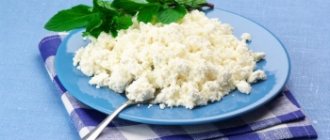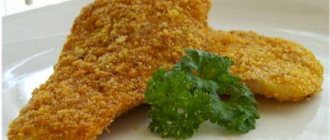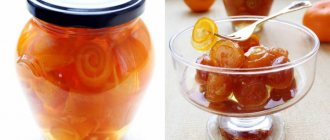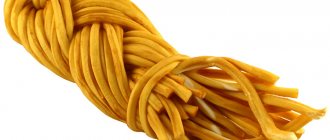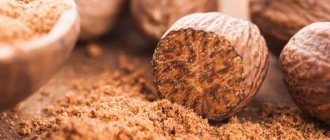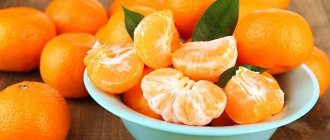Related Products
Chicken Breast (184 cal) Steamed Chicken (175 cal) Cooked Chicken (237 cal) Chicken Breast (150 cal) Boiled Chicken (215 cal) Chicken Leg (233 cal) Chicken Wings (241 cal) White chicken meat (188 kcal.) Chicken fillet (150 kcal.) Skinless chicken (150 kcal.) Chicken cutlet (290 kcal.) Chicken steak (239 kcal.) Grilled chicken (193 kcal.) Chicken meat (181 kcal.) ) Fried Chicken (284 cal) Rotisserie Chicken (150 cal) Chicken Thigh (226 cal) Whole Fried Chicken (227 cal) Baked Chicken (150 cal) Lean Chicken (143 cal) Skin-On Chicken (234 cal) Sautéed Chicken (217 cal) Chicken Skin (423 cal) Canned Chicken (155 cal) Chicken Gizzard (154 cal) Minced Chicken (189 cal) Chicken Heart (185 cal) Chicken Liver (170 cal) Stewed Chicken (210 cal) Raw Chicken (172 cal) Chicken Leg (188 cal) Whole Chicken (239 cal)
Beneficial features
Vitamin E has a beneficial effect on the skin, maintaining its elasticity and youthful glow, protecting it from the harmful effects of the environment and inevitable age-related changes.
Thanks to the minerals it contains, pita maintains normal well-being in case of anemia and prevents the development of malignant tumors. The course of colds, as well as inflammatory processes, is easier - this bread promotes rapid healing and helps with infertility.
Like bread made from wallpaper flour, pita is recommended for consumption in case of existing obesity, diabetes mellitus and atherosclerosis. Reduced activity of the intestinal walls can also be restored with wholemeal breads.
When consuming this product, salts of heavy metals, radioactive substances, toxic components, and remnants of decomposing biological products are removed. Thus, this bread helps to increase life expectancy.
Composition of nutrients, BJU
Chicken giblets
| For quantity: 100 grams | ||
| Calories — 191 | Calories from fat - 68 | |
| BJU | ||
| Total fat content | 7.58g | |
| Saturated | 2.24g | |
| Polyunsaturated | 1.69g | |
| Monounsaturated | 2.2g | |
| Cholesterol | 407 mg | |
| Total carbohydrate content | 1.22g | |
| Dietary fiber | 0g | |
| Sugar | 0g | |
| Squirrels | 27.72g | |
| Vitamins and microelements | ||
| A - 2925.2 µg | C - 8.44 mg | |
| B-6 – 0.42 mg | B-12 - 8.36mcg | |
| D - 0mcg | E - 0.46 mg | |
| Calcium 14 µg | Iron 7.34 mg | |
| Magnesium 19.8 mg | Zinc 4.82mg | |
| Potassium 204 mg | Sodium 70mg | |
Distribution of calories for BJU:Carbohydrates (7%) Fats (35%) Proteins (58%) | ||
Chemical composition and calorie content
The calorie content of fresh halibut is 91 kcal. 100 g contains 18.56 g of protein (this is 25% of the daily requirement for an adult) and 1.33 g of fat, in which cholesterol takes up only 0.05 g. Halibut protein is rich in essential amino acids leucine, isoleucine and valine, their content is 36.8, 48 and 43% of the daily intake.
Although, like other fish, halibut is high in phosphorus (236 mg or 33.7% of the daily value), its main mineral is selenium. It contains 45.6 mcg, which is 83% of the norm. This mineral is necessary for the functioning of the bone marrow, which produces white and red blood cells, and therefore for the proper functioning of the immune system. Without selenium, the production of male reproductive cells is impossible. It is an essential component of many enzymes and hormones. Without selenium, the functioning of the body is simply impossible, and many factors lead to its deficiency, including frequent use of paracetamol.
Of the vitamins, group B is the leader in content (B3, B6 and B12 in amounts of 40.7, 42.2 and 49% of the intake, respectively). All these substances are necessary for the normal functioning of the nervous system, and cyanocobalamin (B12) is involved in hematopoiesis. Halibut also contains a lot of vitamin D (31.3%), which is responsible for the absorption of calcium and phosphorus.
The benefits of pita for the human body
- Like regular high-quality bread, pita bread is good for the digestive system, as it is well digestible and contains a lot of fiber, and is also nutritious (helps to satisfy hunger faster during meals).
- The presence of high-quality flour from grains of various grain crops, as well as the absence of salt and sugar in pita, has a beneficial effect on cholesterol levels and blood sugar with the constant use of these flatbreads.
- Pita is also useful because it improves intestinal motility and metabolism in the body.
- The fiber contained in pita helps remove toxins and harmful substances from the human body.
- Pita bread is a rich source of beneficial microelements such as potassium, sodium, calcium and magnesium, as well as vitamin E and B vitamins.
Harm to pita and contraindications for use
No harmful properties have been found in pita, the main thing is not to abuse this product, choose and eat only fresh and high-quality flatbreads. In very rare cases, individual intolerance to the components of pita is possible.
How to store pita at home?
Unfortunately, pita bread cannot be stored for a long time (the thin layer of dough dries out quickly in the flatbread) and it is better to cook it or buy it immediately before use. After purchasing, it is best to keep the pita in a paper bag so that it does not spoil so quickly and does not become damp, but you can also place it in a plastic bag for a short time (it will dry out less, but may become damp).
It is better to eat ready-made fresh pita within a few hours after its preparation, otherwise it will begin to dry out and lose its original taste.
In conclusion to the article, it can be noted that knowing whether pita is useful for the human body and how it is useful, you will more often consume this delicious bread cake, and also, if you wish, cook it yourself (the recipe for making pita is not complicated). We leave our reviews on the topic of how pita is useful (the benefits and harms of pita for the human body) in the comments to the article and share it on social networks if it was useful to you.
Yulia Sabinova
Chief editor of the site. Cook, technologist, traveler. I love to cook, read interesting articles about cooking and proper nutrition, learn everything new and share the most interesting things with others. I am glad to see you on the pages of the InfoEda website.
Save on social networks:
Application
Thanks to the existing pocket, pita bread coated with hummus is often used as a “packaging” for meat with herbs and vegetables. Even if there is no such pocket, you can make it yourself with a knife. You can also wrap it, pre-greased with sauce, with the filling in the form of fish, herbs and vegetables, roll it into a roll and bake in the oven.
Market Analytics
- COVID-19 is changing the rules of the game in the cosmetics market
- Beauty of the future: cosmetic innovations 2020
- New ingredients are the driving force of the cosmetics industry
Convenient search for beauty salons on our website
Beauty salons in Moscow Beauty salons in St. Petersburg Beauty salons in Ekaterinburg Beauty salons in Novosibirsk
Latest blog posts on our website
- Naturecream / Geranium (Pelargonium) oil for skin health and beauty
- Prostye-sovety / Save on a beauty salon: procedures that can be done at home
- Naturecream / Growth Factor - brings back youth?
- Oksana-Lezina / 3 effective abdominal exercises from a fitness instructor for beginners
- Prostye-sovety / Making perfect curls at home
- Prostye-sovety / Which hair removal method to choose
- Naturecream / Wrinkles Puppets
- Naturecream / PEPHA-TIGHT - instant skin lifting
- Naturecream / Blue light - a danger to the skin
- Naturecream / Cocoa Butter – A treat for the skin
Latest forum topics on our website
- Mrs._Smith / Badly sunburned! What to do?((
- Ice / Is it necessary to combine fitness classes with a diet?
- Antonova / What can be used for hair loss?
- Radio operatorKat / Who was on a protein diet?
- Suzanna / Mesotherapy on the face
Other articles in this section
| Yufka Yufka is a national dish of Turkish cuisine, made in the form of thin unleavened flatbreads. The birthplace of this dish is Turkey; yufka can be bought in any of the national stores in the country. However, the process of preparing it is very simple; you can make the dish yourself. |
| Country Bread Thousands of years ago people learned to bake bread. Initially, sedentary tribes living in small settlements began to cultivate cereal plants. And for most residents of that time, bread became the basis of the daily diet. Many recipes for its preparation have come down to our time from ancient times. And one of them is baking Derevensky bread. The name of the recipe suggests that they began to use it long before people began to live in cities. |
| Matzo Matzo is one of the most legendary and ancient types of bread. Jews first began to make it, so this product is associated with this people. Matzo is considered "poor bread." |
| Rye-wheat bread This composition of bread is considered traditional, and dates back to ancient times, it was then that people realized that such bread as rye-wheat has the most complete optimal balance of all components. This bread was mentioned in ancient manuscripts; healing powers have long been attributed to it, because a mixture of rye and wheat flour is still a valuable recipe for baking. |
| Bread with bran At first, bran was considered suitable only for animal feed; it was steamed and fed to animals for faster weight gain. Thanks to the research work carried out, it was revealed how useful bread with bran obtained after grain processing is. A large number of people know that bran is the husk peeled from grain, but only a few people know why it is useful. It is interesting to know that this is where the largest amount of biologically valuable substances is concentrated - about 90%. |
| Vysivkovy Bread Bread baked with the addition of bran or from whole grain flour is called vysivkovy. The name “vysivkovy” comes from Ukraine - that’s what they call the grain shells there. But more often they are called simpler and more familiar - bran. The first mentions of such bread were found in Ancient Egypt. Vysivkov bread was eaten by people belonging to the simple, poor strata of the population, since this type of bread was the cheapest and most accessible. |
| Banana bread Delicious banana bread is known all over the world. It is called "banana bread". This product is a kind of “mix” of bread and cake. But the recipe belongs to the first category. |
| Baranki The first steering wheel was made in a city called Smorgon, located in Belarus. Initially, the name of this product was “boiled”. It had this name because the product was prepared from scalded dough. And only after a while people called it “steering wheels,” because people believed that the product looked like a ram’s horn. |
| Oatmeal Bread The first mention of oat cakes was recorded in English chronicles in 779. For a long time, oatmeal was the hallmark of the British Isles, and oat bread was a staple in the diet of most Englishmen. Today there are many products that use oats, and one of the most delicious and widespread is oat bread. |
| Wheat bread Wheat, as a cereal crop, has been grown for thousands of years. Nowadays, it is necessarily cultivated in most countries of the world. The wheat product of greatest importance is flour, which is used to make various types of bread and sweet pastries, depending on the degree of grinding. |

